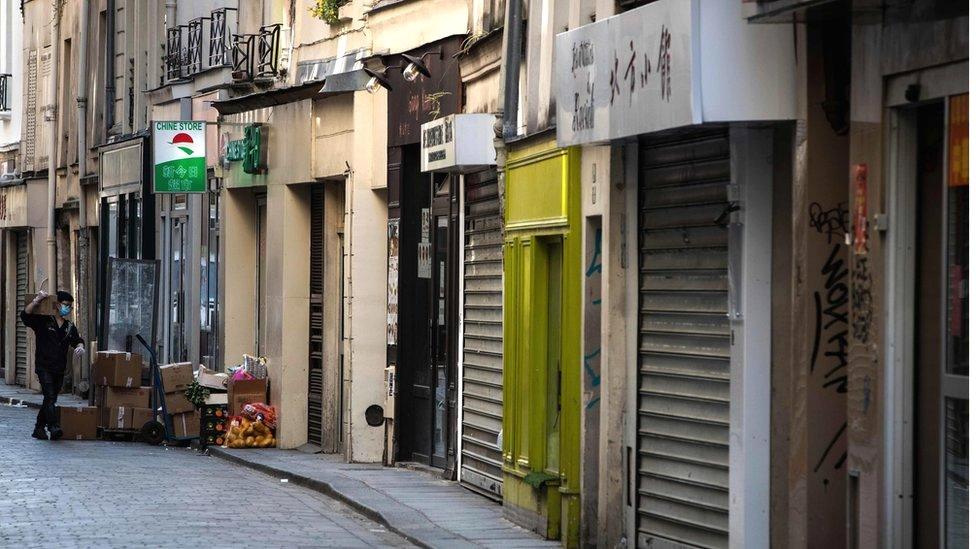Coronavirus: Young could be scarred throughout working life
- Published
- comments

The International Labour Organisation has said young people are disproportionately being affected by the coronavirus health crisis.
In a new report the ILO, which is a United Nations agency, warns there is a risk they could be scarred throughout their working lives.
They could become what the report calls a "lockdown generation".
It says young women have been especially hit by the increase in unemployment.
Young people have been affected by what the report calls "a triple shock".
The virus, it says, is destroying their employment, disrupting education and training and putting obstacles in the way of those who want to start work or change jobs.
One in five have stopped work since the onset of the pandemic.
Among those who have remained in employment, working hours have declined by almost a quarter.
Before the crisis, more than 40% of young people were working in hard-hit sectors such as accommodation, food services and retailing.
Three quarters were in informal employment and therefore had little protection if they do lose their jobs. In Africa, the figure is more than 90%.
Education and training, including "on the job" programmes are suffering massive disruption, the ILO says.
A great deal of training is now being done at a distance, online. But the ILO says few low-income countries have managed to make that transition.
The agency calls for targeted intervention by governments to guarantee employment and training for young people in low and middle-income countries that may need foreign support both for finance and implementation.
The report also says that rigorous testing and tracing of infections strongly translates to lower labour market disruption than do confinement and lockdown measures.
The ILO argues that testing and tracing improves the chances of what it calls an employment-rich recovery.

EASY STEPS: How to keep safe
A SIMPLE GUIDE: What are the symptoms?
CONTAINMENT: What it means to self-isolate
HEALTH MYTHS: The fake advice you should ignore
MAPS AND CHARTS: Visual guide to the outbreak

- Published5 July 2022

- Published27 May 2020

- Published14 May 2020

- Published29 April 2020
